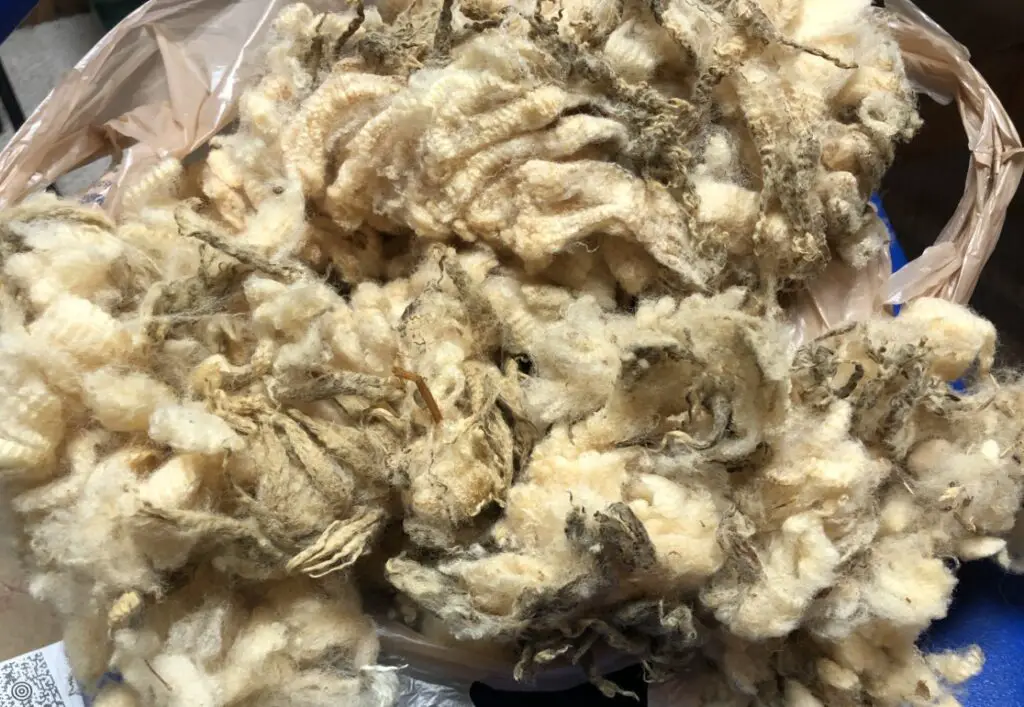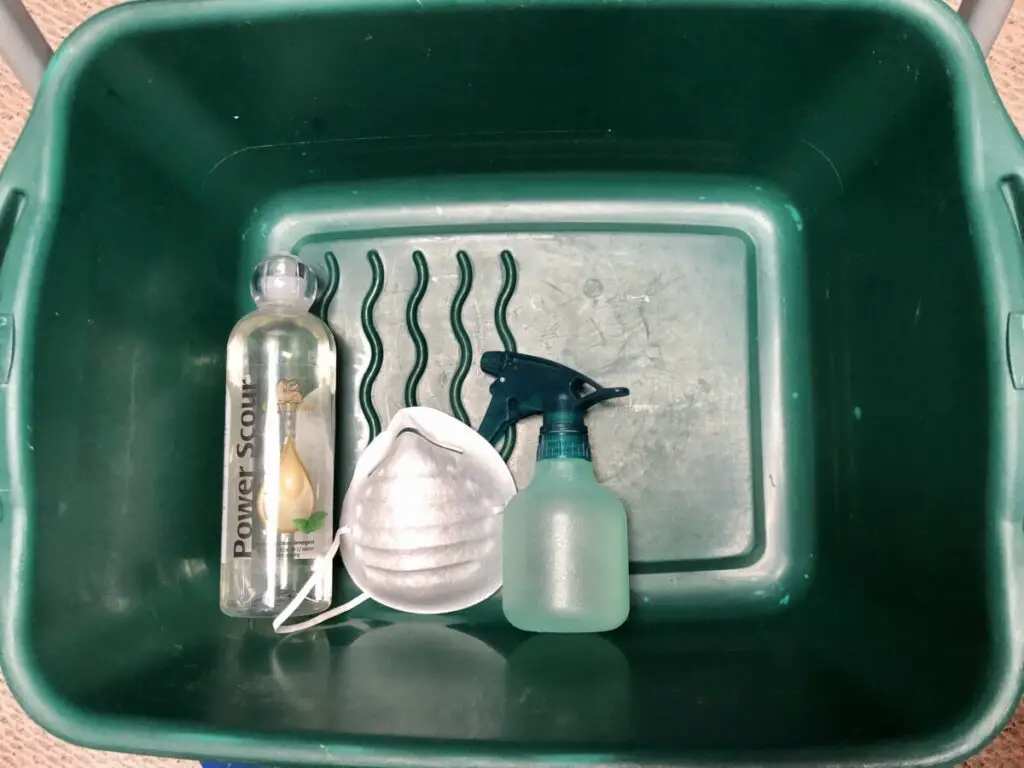If you have a fiber stash or a lot of wool yarn, storing all of that safely is extremely important. When you’re thinking about how to best store your wool, you need to ask: can wool get moldy?
Wool can get moldy. Because of this, it is important to store wool in a cool, dry place or in an airtight container. If wool does get wet, air it out quickly to prevent mold growth. If mold is already growing on your wool or wool object, take it outside and brush off all the mold you can, then wash the wool in hot water and lay it out to dry in the sun, if possible.
Having your wool fiber, yarn, or garment infested with mold can be devastating. But, not to worry, in this article, we’ll cover how to prevent mold from growing and what to do if your wool does grow mold. First, though, let’s talk about why wool gets moldy in the first place.
Table of Contents
Can Wool Get Moldy? And Why?

Wool is certainly not the only thing that can get moldy. Mold and mildew aren’t particularly picky when it comes to where they choose to grow.
But, the magic recipe that makes mold grow is moisture, oxygen, and food. Another thing that affects mold growth is temperature, mold typically won’t grow at temperatures lower than 40 degrees Fahrenheit and will grow the fastest between 60-80 degrees.
Let’s talk about moisture. Mold will not grow without moisture. If anything wool gets damp, there’s a chance mold could grow on it. Mold usually takes between 24-48 hours to begin growing. So, if you’re able to catch it and get it dried out before this time frame has elapsed, there’s a good chance you can stop the mold before it can grow.
Oxygen is pretty self-explanatory. Mold needs oxygen to grow just like we need oxygen to live. But, this also means that if you keep your wool in sealed containers, like vacuum seal bags, this will prevent mold growth.
Lastly, mold needs food to grow. Mold is a microscopic fungus which means its job is to decompose organic materials just like other types of fungus. Organic materials are basically anything not made in a factory such as plant and animal products. Unfortunately, that means wool and cotton are both on the menu.
Now that you know what mold needs to grow, let’s talk about what you can do to prevent it from growing on your wool stuff.
How to Prevent Mold
We talked about the magic recipe that mold needs to grow; moisture, oxygen, food, and temperature. So, if you take one of those things away, the mold won’t be able to grow.
The easiest thing to do is to store your wool in a cool dry place. But, life happens and you can’t always prevent that pipe from bursting or that storm from flooding your house. So, if your wool does get wet, dry it out as soon as possible. We’ll talk about what to do if mold is already growing on your wool in the next section.
If you’re not too confident about your wool staying dry, you can also store your wool in airtight containers. This will cut off the oxygen that mold needs and prevent water from getting in. This is a great option if you live in a humid climate.
If you’re like me and have an ever-growing stash of wool fiber and yarn, vacuum-seal bags are a great storage option. They are not only airtight, but they also help save space.
Preventing mold is great, but what happens if your wool gets moldy despite your best efforts?
How to Clean Moldy Wool

Your wool stash getting moldy can be your worst nightmare. Fortunately, you’re not alone. Let’s talk about how you can save your wool from mold and when you might need to just toss it out.
When dealing with mold it’s important to remember safety first. If you’re going to clean out mold, you’ll want to wear a mask and gloves or get a professional to help you. Mold is no joke and can cause some serious health issues.
If you’re going to take the plunge and work on cleaning the mold infestation yourself, then let’s get started.
First, take everything that has mold outside or make sure you’re in a well-ventilated area. Make sure you’re gentle while moving it. Mold can release spores when bumped or agitated. Those spores can grow more mold so you definitely don’t want it to spread anywhere else.
Once you have it outside and with your mask and gloves in place, brush as much of the mold off the surface of your wool as possible. You can use any kind of soft bristle brush for this, including a toothbrush.
Next, you’ll wash your wool in hot water. You can just use a regular wool wash soap or a mild liquid dish soap like Dawn.
Most molds will be killed with water between 140-160 degrees Fahrenheit. This hot water won’t hurt your wool, you can even use boiling water. But, make sure you don’t agitate your wool while it’s in the hot water! Gently press the wool down into the water using a wooden spoon or even a potato masher but don’t swirl or stir it around.
Let your wool soak in this mixture for around twenty minutes. Rise your wool the same way as above just without the soap. Here’s another article that goes more in-depth about how to wash wool properly.
Once your wool is clean, squeeze out any excess water and let it dry thoroughly. If you’re able to let your wool dry in the sun, even better. The sun is a natural killer of mold.
If there’s a lot of mold growth or you’re not able to clean your wool safely, the best thing to do is just throw it away. I know it’s never the best, but you will at least prevent the mold from spreading to more things.
Wrap Up
Whew, That was a lot of stuff. Let’s review the most important things.
Mold needs moisture, oxygen, and food to grow. you can prevent mold from growing by storing your wool in a cool dry place or storing it in airtight containers.
If your wool does get wet, dry it out as quickly as possible in the sun.
If your wool has mold growing on it, take it outside and brush off as much of the mold as you can. But remember, wear a mask and gloves.
Then, wash your moldy wool in very hot water but, don’t agitate the wool while it’s in the hot water.
And there you have it!
If you still want some more information about mold prevention or cleaning in your home, FEMA has a great brochure about it that you can find here.
Now go make something awesome!

